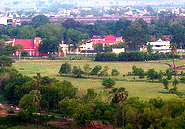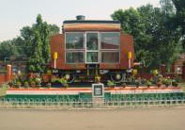Welcome to Jamalpur the world’s most beautiful place! Munger, Bihar
Welcome to Jamalpur ||Munger, BiharArchive for History Of Monghyr
MUNGER – Historical Pointers
The territory included within the district of Munger (famously Monghyr) formed pent of the Madhya-desa as “Midland” of the first Aryan settlers. It has been identified with Mod-Giri a place mentioned in the Mahabharata, which was the capital of a kingdom in Eastern India near Vanga and Tamralipta. In the Digvijaya Parva of Mahabharata, we find the mention of Moda-Giri, Which seems similar to Moda-Giri. Digvijaya Parva suggests that it was a monarchical state during early times. A passage in the Sabha-Parva describes Bhima’s conquest in Eastern India and says that after defeating Karna, king of Anga, he fought battle at Modagiri and killed its chief. It was also known as Maudal after Maudgalya, a disciple of Buddha, who converted a rich merchant of this place into Buddhism. Buchanan says that it was the hermitage of Mudgala Muni and this tradition of Mudgal Risi still persists. Munger is called “Modagiri” in the Monghyr copperplate of Devapala. The derivation of the name Munger (Monghyr) has found the subject of much speculation. Tradition arcribes the foundation of the town to Chandragupta, after whom it was called Guptagars a name which has been found inscribed on a rock at Kastaharni Ghat at the north-western corner of the present fort. It is insisted that Mudgalrisi lived there. Tradition ascribes the composition of various suktar of the 10th Mavdala of the Rigveda to Rishi Mudgal and his clan. However, General Cunnigham had strong suspicicion when he connects this original name with Mons as Mundas, who occupied this part before the advent of the Aryans. Again Mr. C.E.A. oldham, ICS, a farmer collector suggests the possibility of Munigiha, ie , the abode of the Muni, without any specification which later corrupted to Mungir and later became Munger.
At the dawn of history, the present site of the town was apparently comprised within the Kingdom of Anga, with the capital Champa near Bhagalpur. According to Pargiter, Anga comprises the modern districts of Bhagalpur and Munger commissionary. The Anga dominion at one time included Magadha and the Shanti-Parva refers to an Anga king who sacrificed at Mount Vishnupada. In the epic period Modagiri finds mention as a separate state. The success of the Anga did not last long and about the middle of the sixth century B.C. Bimlisara of Magadha is said to have killed Brahmadatta, the last independent ruler of ancient Anga. Hence the Anga became an integral part of the growing empire of Magadh. As epigraphic evidence of the Gupta period suggests that Munger was under the Guptas. To the reign of Buddhagupta (447-495 A.D) belongs a copper plate of A.D. 488-9 originally found at Mandapura in the district.















